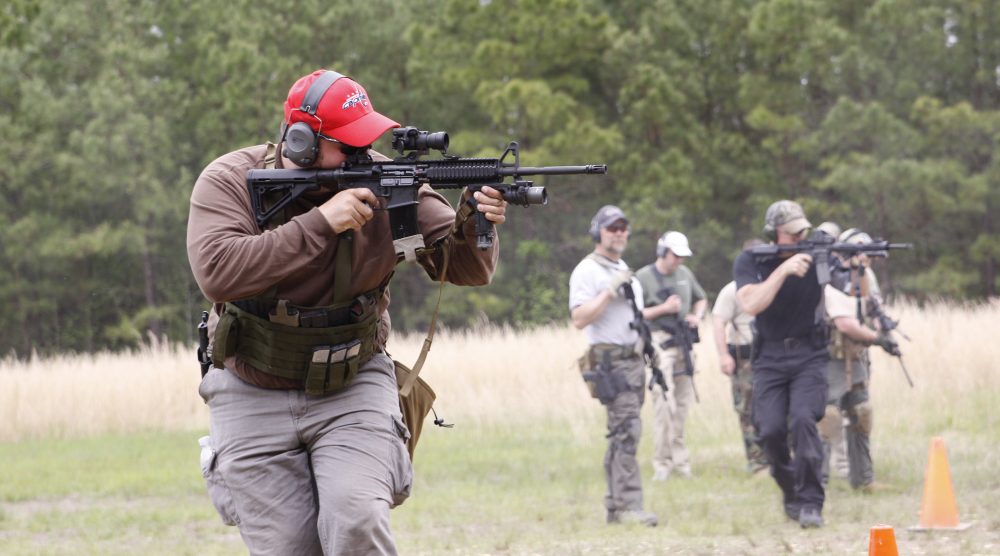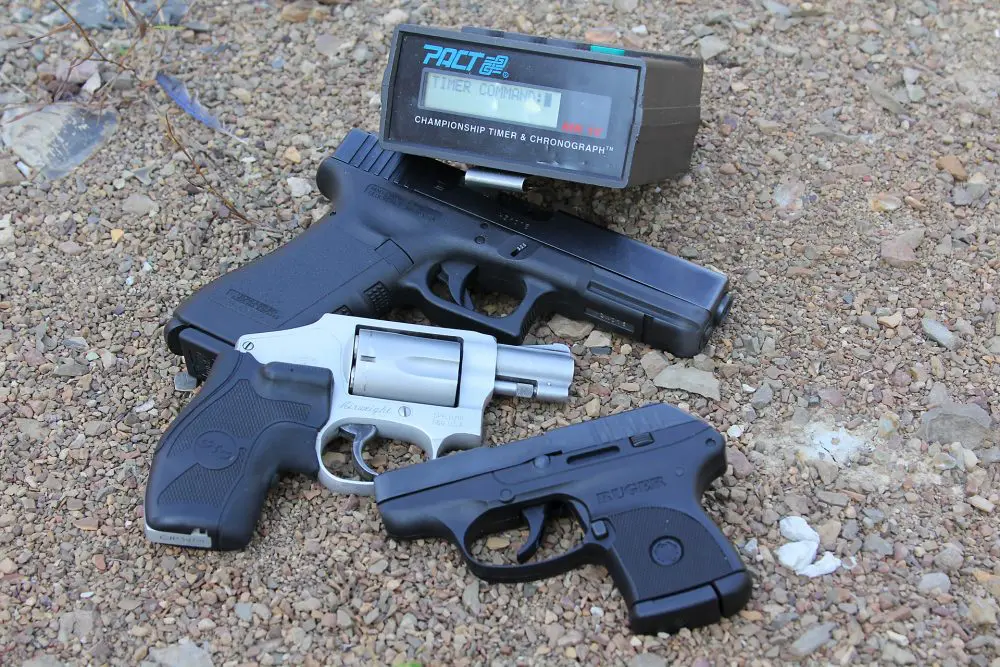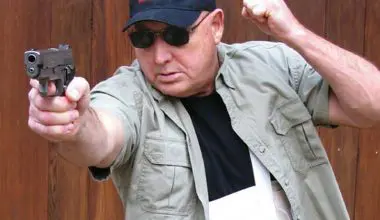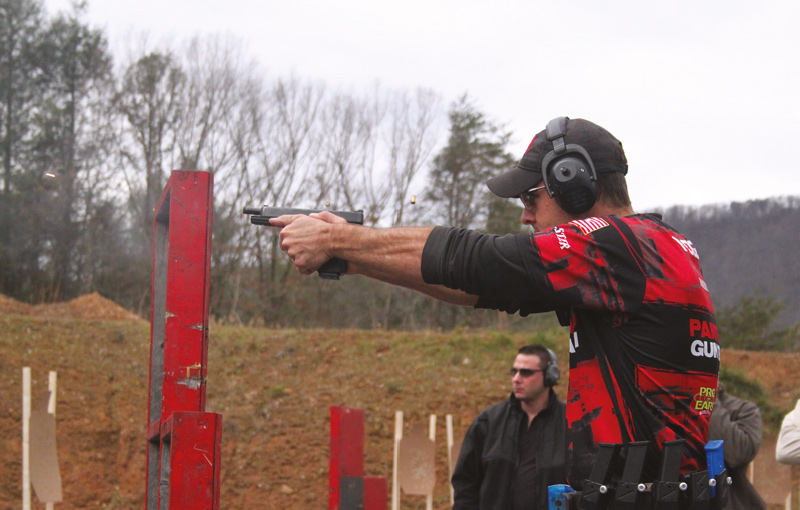

After years of attending firearms classes, I decided to take a different tack in an attempt to increase my skill level with a handgun. My focus has been on improving personal-defense proficiency. The classes I attended always had a large number of students who were LE, private security contractors, and military operators.
I think we all accept that professional competition shooters are the highest skilled “pistoleers” in the world— after all, that is what they do for a living—and get to expend time and money that most cannot imagine on improving skill levels.
I have heard reports of certain Tier 1 Special Operation units inviting world-class competition shooters to train with them in an effort to wring out any kernels of knowledge possible in running a handgun more efficiently and ruthlessly in CQB environments.
While I have participated in 3-Gun competitions, albeit on a limited basis, I have never taken the crossover potential of competition skills seriously as applicable to tactical situations.
The debate rages over benefits gained from participating in “gun games” as being relevant to real-world situations, with many respected figures found on both sides of the argument. As with most issues that become heated and both sides polarize into die-hard camps, the truth lies in the middle. For many, competing is the best way to test abilities when under pressure.
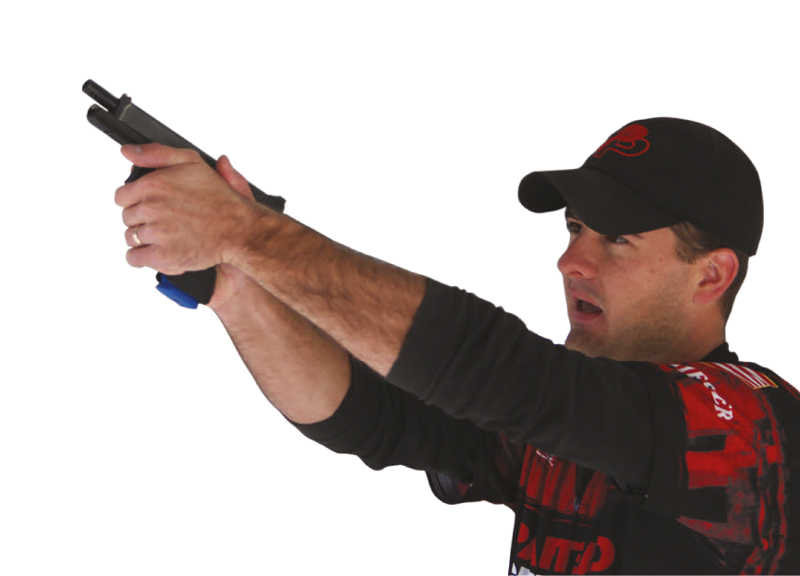
Table of Contents
MEET THE CHAMP
I recently reached my own epiphany about the topic when I attended a twoday seminar by World Champion Robert Vogel, hosted at Echo Valley Training Center (EVTC) near Winchester, Virginia. Robert has exploded onto the competition handgun scene over the last few years, with 12 National titles in IPSC, IDPA, and USPSA sanctioned events.
What really attracted me to Vogel’s course was the fact that he is an active peace officer and his championships are in divisions requiring competitors to use basically stock ironsighted handguns. In fact, Robert often carries the same Glock 35 on duty with his county special response team as he participates with in matches. In other words, Vogel’s shooting techniques can be considered applicable to CQB situations.
Robert labels the course held at EVTC a “practical pistol application class” for competitors and tacticians alike, and should be considered advanced. It builds upon what you have already trained in other pistol classes, assuming you have the basics down and are safe to operate in a dynamic class environment.
Robert Vogel bought his first handgun, an S&W Model 19, at 15 years old. He set up combat course-type scenarios on the farm where he grew up and brought friends over to shoot with.
While attending the law enforcement academy after high school, he discovered a nearby IDPA club that held a match once a month. At Robert’s first organized match, in September 2001, he placed first out of 19 competitors. This acted as an awakening for Robert, reaffirming he had a talent for shooting that matched his love of it. He committed himself to being the best he could be from that time forward.
Robert’s major sponsor now is Panteao Productions, with whom he has filmed two instructional DVDs.
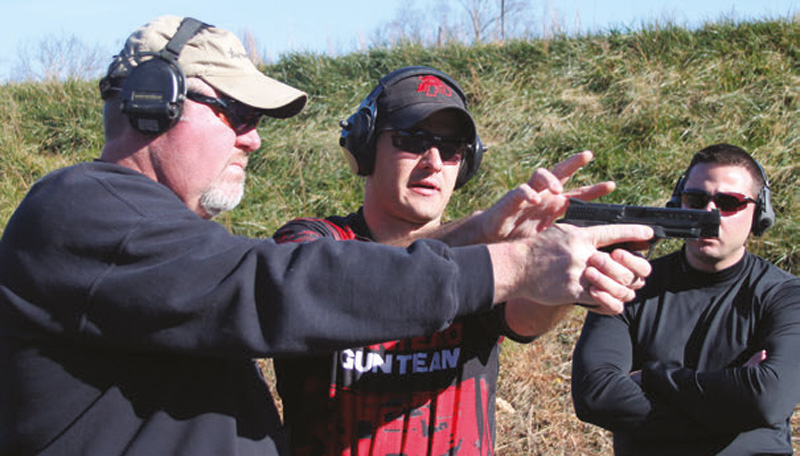
COURSE GOALS
The course is saturated with methods for increasing speed and accuracy when engaging targets—all applicable during a CQB or personal defense encounter. The class quickly discarded squarerange norms and explored field-expedient positions such as one handed, behind cover and offhand shooting, with thoughtful presentation of special problems including confined-area shooting and shooting in crowded environments.
Handgun training is the most relevant type of preparation for civilians who practice concealed carry. Ironically, proficiency with a handgun is the hardest skill set to learn, combined with being the most perishable of weapon manipulation skills.
One must constantly train and practice to maintain any hard-earned handgun skills. Vogel stresses his instruction caters to participants using stock weapons and gear. Robert’s real-world experience serves as a great check/balance against competition displacing realworld applications of what he is trying to teach. Let’s face it, the faster you can present and place accurate rounds on target while moving, the better it will serve you, whether you’re being scored during a match or trying to survive a personal defense encounter.

Robert’s main goal for training is to bring people up to speed on sheer shooting skills, both physical and mental, and all that involves. Application of these skill sets is up to the individual, depending on their operating environment.
While tactics are often subjective, shooting ability is measurable. Robert has devoted half his life to being the best possible shooter he can be, and he tries to convey to people what he has learned during that journey. He stressed the importance of mindset in laying the groundwork for success whether for competition or a life-and-death situation. A positive and unintimidated outlook is crucial—any doubt of abilities must be squashed to ensure the best chance of success.
PRO-AM STUDENTS
The 16-person class held at EVTC was Robert’s first large class foray with students who were not primarily competition shooters. Over the last five years, the majority of his classes have been more specialized and might even be called coaching, with just one or two students at a time coming to him in Ohio with a strict focus on improving competitive shooting skills.
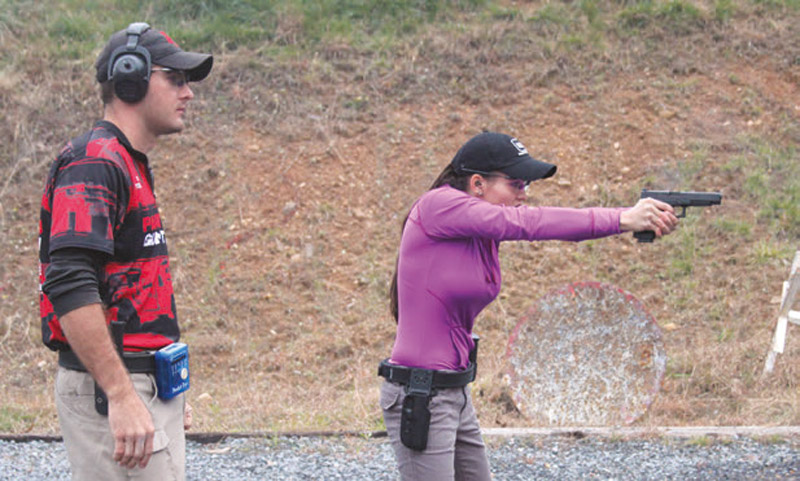
Robert has instructed LE/Mil types, but due to his resume, he has thus far been in demand mostly with competition shooters.
The EVTC class was 60% civilian and 40% LE and military. The LE personnel were from various Federal entities and numerous local agencies, some being members of SRT teams. They obviously felt something could be gained from learning how to run their handguns faster and more accurately. When asked what techniques best cross over between competition and LE/CQB applications, Vogel answered, “The physical aspects of practical shooting are the same in every realm—grip, stance, weapon manipulation, trigger operation, hand-eye speed and coordination. This is what so many people need to learn the most! Shooting skillwise, competition shooters are the best ‘shooters’ in the world hands down, because it’s what they do and they are constantly pushing and trying to get better, that’s what ‘competition’ does.
“The biggest plus about competition as I see it, and I’m talking about IDPA, IPSC, USPSA, is that it requires you to think quickly while running around shooting things. More people, even experienced shooters and LE types, have problems with this than almost anything else! I could talk for a long time about the friction often seen between ‘competition’ types and ‘tactical’ types. I have lived in both worlds and can see both sides of it. For my part, however, I’ve found competition to be nothing but a plus. In a way it’s made everything else with a gun seem easy, and I’ve never experienced an impulse to do something stupid in the real world because of competition. I do feel that is largely a myth.”
I asked him if he’s ever considered moving on to “Open” class competition divisions, where customization and optics rule. His answer was indicative of why training with him has applications across the board. “I have nothing against Open class, but it is not really my thing. Open guns are a different animal, and I just prefer to shoot guns similar to what I use and carry in my job and in the real world.”
POINTS OF EMPHASIS
Placing multiple hits on a target with a handgun is touted as the best means to effectively end a fight quickly. If you are shooting tight groups that can be covered with a fist, you need to speed it up. Combat accuracy with a handgun is best determined by the ratio of hits to speed when multiple rounds are fired.
A quick survey of Vogel’s YouTube videos leaves no doubt that Vogel has fine-tuned his ability to hit targets with amazing rates of fire honed during numerous matches under great pressure to perform.
In any two-day course, time is limited and the instructor is forced to focus on certain key aspects he feels are the most viable. The Vogel EVTC class started with honing weapon presentation from positions other than squared off to the target. The applicability of fluid movement while engaging targets is obvious in a defensive situation.
Robert placed strong emphasis on marksmanship, urging students to make good solid hits and not to let speed carry them past effectively engaging a target. Make no mistake, misses mean nothing— no matter how fast you miss. The aspects of the class I was particularly focused on were how to “drive” my pistol via recoil management, and transitioning among multiple targets. Vogel emphasized the grip and how this affects so many facets of effective shooting.
Shooting on the move was another element of the course that has direct ramifications for LE, military operators, and private citizens. Movement is crucial to surviving a hostile encounter. Freezing in place or misguided notions of standing and delivering sighted pistol fire are sure prescriptions for failure. Thus, moving while drawing the weapon, reloading and performing malfunction drills were constantly hammered home, with most drills and shots fired conducted while moving to engage the adversary.
Safety was stressed at all times, while students were constantly inculcated with a mindset of never giving up, along with the sage advice of not making the subject matter too complicated. This is a sure way for range-practiced skills to break down under the pressure of a lifeor- death encounter.
DRILLS
The first day of class consisted of drills with students arranged on the line together. An instructor will always strive to verify class skill level before deciding how far to push the training envelope. Echo Valley did a good job of screening candidates with more advanced skills so that the class could progress quickly.
The class shot many initial drills on the TacStrike steel target system that was brought in especially for Vogel’s course. Robert introduced transition between target sets, then induced movement while engaging TacStrike steel. Hearing rounds hit steel is rewarding.
The second day of class was primarily guided by different stage samples that Robert set up. Here was the key to the class—a competitor like Team Glock’s Tori Nonaka and an LE/military operator could both see the advantages of engaging targets on the move while under the induced pressures of timer, Robert’s watchful eye, and classmates waiting their turn.
TAKEAWAYS
This class left me wanting more time on the range to further enhance my abilities with a mentor of Robert’s caliber offering guidance. Without a doubt, I would train with Robert every time the opportunity presented itself. Even though I am quite a bit older than Robert and have been shooting a long time, he is unquestionably a master handgunner that any shooter could learn from, regardless of their experience level.
Robert recognizes that, no matter how intensive, two days are not enough to totally alter anyone’s current style. However, his instruction offered solid methods that could be practiced later to good effect. Everything learned during Vogel’s course was designed to increase the students’ chances of success hitting a target with a handgun under stress while moving or in unorthodox positions.
This has applications for competitors and those defending against a hostile attack or advancing upon an enemy in a CQB environment. Keeping it simple took on more meaning when placed under stress. You can hear or read about the degradation of fine motor skills, but nothing reinforces this like having it happen to you personally.
Weaknesses in your own skill and possibly equipment are exposed, but it’s better to have this happen during training than when there is no reset button on a two-way range.
GUNS AND GEAR REPORT
I used a Glock 34 and Gen 4 Glock 17 for the course. The Glocks performed as expected, with no malfunctions during the two days of shooting. It is best to think of the Glock line-up of handguns as a “system” stretching from the mini Glock 26 through the Glock 21SF, with the Glock 18 and Glock 36 thrown in for good measure. Every Glock shares a lineage back to the first Glock— the G17. The Glock “secret” to success is minimal operating controls, high cartridge capacity to size ratio, and relentless reliability.
While the grip size may change between the Glock 26 and Glock 21, the position of the slide and magazine releases will instantly be familiar. Simplicity should not be confused with lack of refinement. The advantage of this is really appreciated when training spans years and thousands of rounds fired. The intimate familiarization achieved by numerous drawstrokes and pressing out to engage the target cannot be overemphasized.
I carried the Glock 34 in a BlackHawk Standard holster while using the Gen 4 G17 from a Galco IWB Summer Comfort holster. Both Glocks had Warren Tactical Sevigny Carry iron sights installed. The sight is similar to the one used by Vogel on his own Glocks. The rear sight is wider than a standard sight, allowing daylight around the front sight for faster aiming and easier observation of the target.
I always observe the firearms and gear used by students during any course I attend. It often serves as a guide for what works, especially in advanced courses where the shooters usually revert to what is effective, not what is the latest fad. Glock handguns predominated in this class. Other firearms included various SIGs, S&W M&Ps, and a Springfield XD. The caliber of choice for such an extensive shooting session was 9mm, though there were a handful of .40 S&W shooters.
I used Black Hills and Hornady Ammunition, specifically their new steel case ammunition offerings. I expended at least 1,000 rounds of 9mm ammunition, with no failures experienced in either ammunition or Glock handguns. This is serious trigger time under the supervision of a recognized expert—skills were sure to improve.



